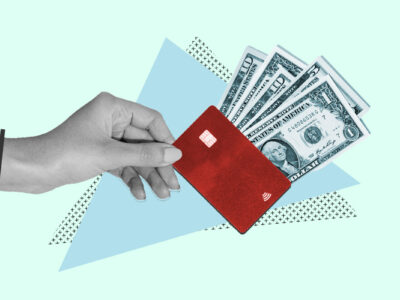As we celebrate Women’s History Month, I’ve noticed my newsfeed spilling over with articles extolling the strides we’ve taken in recent history. Journalists are dancing on the shards from supposedly shattered glass ceilings and applauding the leaps and bounds we’ve made in embracing equal-opportunity gender roles. But have we really come as far as we’d like to think? Yes and no.
This last century has undoubtedly transformed the world as we know it. Among the many advances we’ve made, we’ve moved through two waves of feminism and into the next, fighting and earning unprecedented rights for women in America.
While it’s important to look back and acknowledge how far we’ve come, we can’t lose sight of how far we have yet to go. Here’s how women’s relationship with money has changed over the last century—for better and for worse.
Table of Contents
Step Forward: Women Are Making Money

“Money is power.” It’s an ugly adage, but it shines light on a reality of American life. One of the biggest barriers to women securing power in this country has been the systematic bias against women building their own wealth.
100 years ago, women made up roughly 20% of the workforce. Today, that number has more than doubled, with women representing 47% of the US workforce. 12 Looking deeper into these numbers exposes an even greater leap over the century, considering the jobs that women could hold in 1923 compared to now. While we still have a long way to go, women are occupying a diverse range of roles, including positions of power.
For example, only four women held seats in the 67th Congress (1921–1923). 3 The first woman ever in Congress had been elected just 4 years earlier—before women even had the right to vote. 4 Today, the 118th Congress has a record 128 women, accounting for almost a quarter of all members. 5

On the business side, 9% of Fortune 500 CEOs are women. 6 Again, that leaves a lot of room for improvement, but the difference is drastic compared to even a few decades ago when there were still “marriage bars” prohibiting the hiring of wedded women up until 1964. 7
America’s richest self-made women have a combined net worth of $111 billion, proving women no longer need men to secure that bag. 8
Step Back: Childcare Costs Are Forcing Women Back Home
It’s likely that you or a woman you know has recently left the workforce to take care of a child. Since the pandemic, over 2 million women have traded in their professions for child-rearing. 9 For many of these women, the choice wasn’t voluntary, but instead a product of the childcare crisis that’s forcing women to give up their jobs in favor of stay-at-home parenting.

The two biggest factors driving the crisis are accessibility and cost. Many places in the US are now considered childcare deserts, and the COVID-19 pandemic exacerbated an already dwindling supply of childcare workers. As for the cost, studies indicate the national average cost of child care in the US is $10,600 yearly—10% of the average married couple’s income, or 35% of a single-parent household’s income. 10
A survey found that the childcare crisis—which is believed to be getting worse—disproportionately affects women. A whopping 40% of female respondents said they had left work entirely or reduced their working hours to accommodate childcare needs. 11
The costs of this forced exodus are far greater than a lost paycheck. Losing work to be a stay-at-home parent has been proven to set women behind in their careers, lower their overall pay grade, and increase emotional distress.
Inaccessible and unaffordable child care threatens to unravel the workplace progress that’s been made this last century by forcing women out of their jobs and back into full-time domestic roles.
Step Forward: Women Can Secure Their Own Credit

One of the biggest markers of financial independence is the ability to secure credit. Back in 1923, a woman couldn’t get her own loan or credit card without her husband (or sometimes father) as a cosigner. In fact, women couldn’t qualify for their own credit up until just a short time ago—even when Oprah Winfrey started her career in 1973, the now-billionaire wouldn’t have been able to get a credit card in her own name.
Lack of credit left women without a lifeline in the event of an emergency, especially in the cases of divorce, single motherhood, or the death of a spouse. But in 1974, the Equal Opportunity Credit Act prohibited lenders from discriminating against potential borrowers based on race, sex, age, nationality, or marital status. 12
Now, women hold credit cards, mortgages, home equity, auto loans, personal loans, and student loans at roughly the same frequency as men. 13 Having these lines of credit available is imperative—especially right now in the US—to achieving financial success and security.
Step Back: Retirement Woes Hit Women Hard

After 40 years of working, running a house, and raising three kids, I had the joy of watching my mom retire and take off in her RV for a well-earned life of leisure. Now, just a couple years later, she’s back to work. This is an experience many of us have witnessed firsthand, lived ourselves, or will be faced with in the future.
For all the progress we’ve made in enabling women to achieve financial success, it’s threatened by yet another looming crisis—the retirement crisis. Bloomberg’s Suzanne Woolley writes that retirement was already under threat before the economy took a turn for the worse, stating:
“Then came a pandemic, war in Europe, decades-high inflation, the fastest rate-hiking cycle since the early 1980s and fears of a recession. The resulting market turmoil erased some $3.4 trillion from 401(k)s and IRAs in the first half of 2022.” 14
Retirement funds are increasingly low or nonexistent, younger generations are strapped with insurmountable debt, and people are unable to afford to stop working when they reach old age. This problem continues to worsen with no immediate reprieve in sight.
And women, most of all, are suffering the fallout. A 2017 study found that roughly 50% of women aged 55–66 have no personal retirement savings. 15 Contributing further to the disparity is the fact that women, on average, live 6 years longer than men, and life expectancy continues to rise with advances in modern medicine. 16
This means women have longer to support themselves after they’ve entered retirement, but no money to do so. Many will be forced to live a lower quality of life, while others will have to keep working well into their golden years, making a cruel mockery of the rights we’ve worked so hard to have granted.
Step Back: The Beauty Industry Has a Hold on Women’s Wallets
“Sit there and look pretty” may be an outdated sentiment towards women’s roles in life, but the latter part maintains a chokehold on American culture. Pressure remains as strong as ever on women to look good.

This pressure has long been a product of society, but now it’s being fed by TV, movies, the internet, and social media. Beauty standards are becoming less attainable and more ubiquitous, as screens and filters separate our perception of how women look from the reality while overwhelming us with images of perfection.
The new beauty standard comes at a price. Each year, the American beauty industry generates $49.2 billion in cosmetics sales. 17 While cosmetics, skincare, and plastic surgery are all becoming more normalized for men and non-binary people, women continue to be the vast majority of beauty buyers, with the average American woman spending a quarter of a million dollars on appearance over her lifetime. 18
Although the rhetoric around women and beauty has changed, we continue to place undue value on how a woman looks. And with the fashion and beauty industries capitalizing on this pressure with aggressive marketing and inflated price tags, women are paying the price.
A Ways to Go
While political and social efforts of the last century have allowed women to take more control of their wallets, we’re still facing financial crises that threaten women’s quality of life. Being a woman today is undoubtedly a better experience than it was 100 years ago. We have rights, we have power, we have money, and we have voices—but we also have a long way yet to go.








